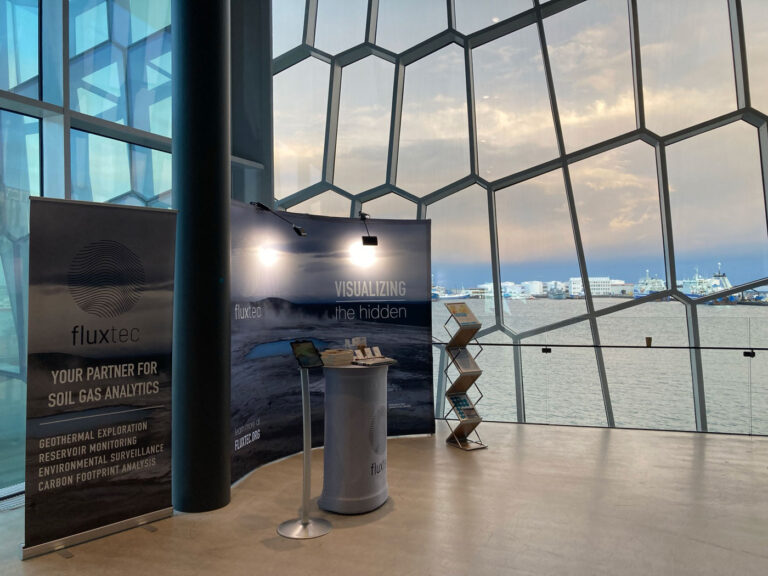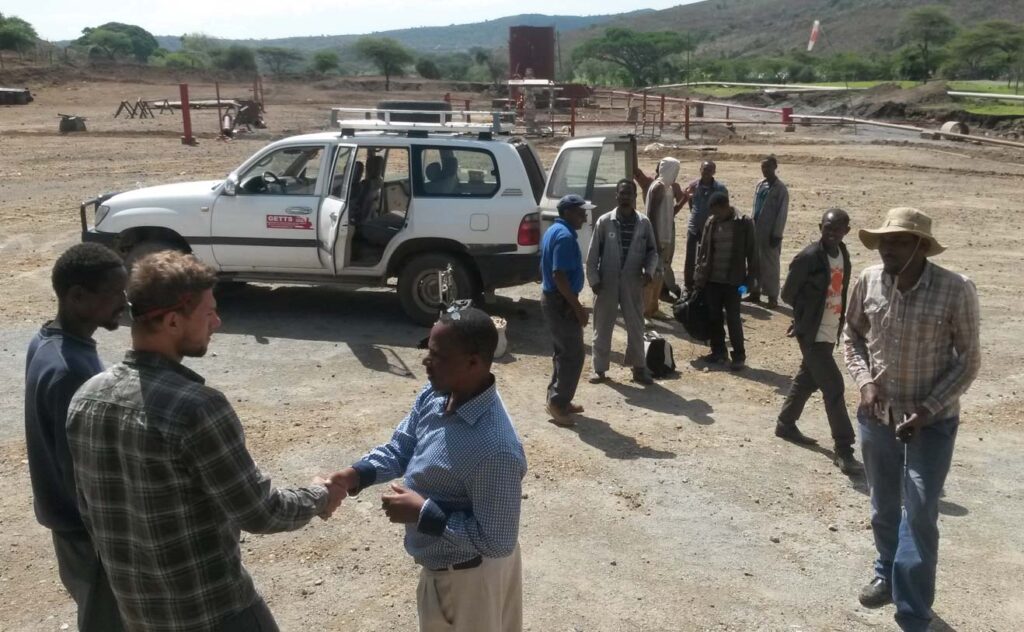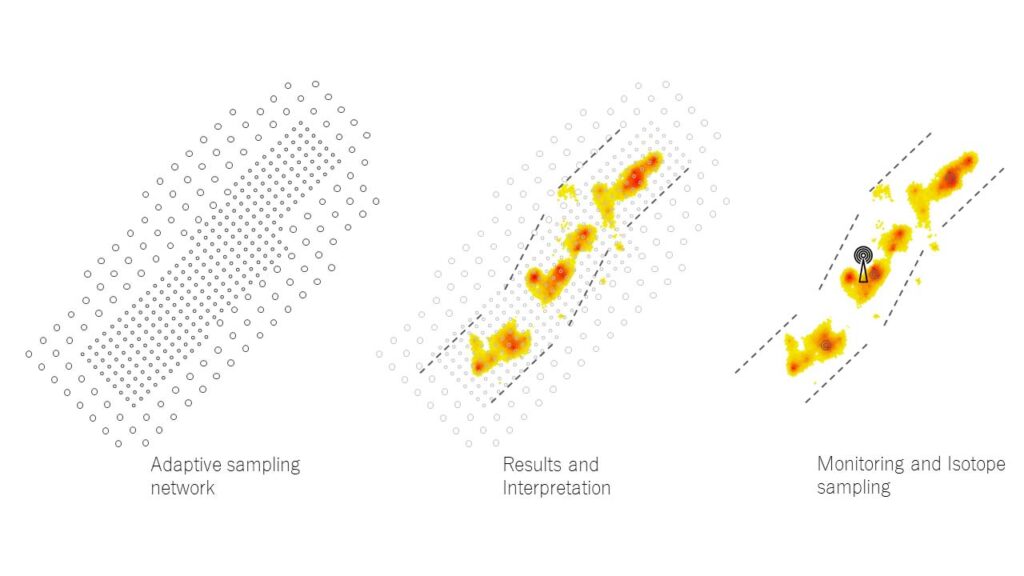fluxtec is a professional service provider of gas analyses for a wide range of applications in exploration and monitoring. This includes mining, geothermal energy, geohazards, waste disposals, environmental studies, and underground gas storage facilities.
Our key motivation is to reduce exploration risks in the development of georesources. We offer tailormade, multi-scale and affordable solutions from single point to reservoir scale surveys. State-of-the-art technologies and innovative workflows for data acquisition, processing, and visualization enable results in real-time.
Our expertise is based on strong international R&D partnerships. We have realised projects in Iceland, Czech Republic, Ethiopia, Rwanda, Tanzania, New Zealand, USA, Mexico, and Germany.

The idea for fluxtec consolidated in 2020 when fluxtec received start-up funding from the Helmholtz Enterprise Programme of the Helmholtz Association and the Helmholtz Centre Potsdam. In the same year, fluxtec won the GFZ innovation award. In 2022, fluxtec was awarded the Helmholtz Enterprise spin-off grant. Building on this effort, fluxtec was founded in 2023 and is based in Potsdam, Germany. Our partners and clients are project developers, engineers and decision-makers from industry and public authorities, as well as academic partners.
fluxtec comprises a group of experts in the analysis of environmental parameters and is managed by Egbert Jolie.
We offer sustainable, environmentally friendly and non-invasive technologies to accelerate the expansion of renewable energies and for a safe and sustainable management of the geological subsurface.
With our portable and flexible equipment, data can be collected even from areas that are difficult to access. Results can be provided in all common data formats and are complementary to common exploration data. We also offer reprocessing of existing data.


Gas emissions at the Earth’s surface provide fingerprints of processes in the deep or shallow underground. They are characteristic for a variety of natural systems (geothermal resources, volcanoes, tectonic rifts), but can also occur as undesired consequences of human activities and installations (mining, boreholes, gas storages, waste disposals). Common endogenous gases are carbon dioxide, methane, but also Radon. The comprehensive analysis of emission rates and gas composition provides valuable insights into the characteristics of georesources and is an integral part of modern exploration and monitoring concepts.
Gas emissions are systematically analysed by fluxtec using an extensive measuring network at predefined measuring locations – in the order of several thousand points. This requires several days of field work and involves extensive on-site measurements and sampling. Flexible grid measurements enable us to analyse large areas of multiple square kilometers.
Monitoring degassing processes at a high spatial and temporal resolution with systematic approaches significantly improves the understanding of (i) undesired changes in gas storage systems, waste disposals, or carbon capture & storage facilities, (ii) geothermal systems and their reaction to geothermal production and stimulation, (iii) processes at major fault zones with high seismic risks, and (iv) behavior of volcanoes in particular before, during and after eruptive episodes. In order to understand dynamics of georesources, we offer multi-component soil gas monitoring by time-lapse and continuous monitoring approaches.
Lake Ngozi, Tanzania
The study describes an integrated approach of (i) bathymetry, (ii) thermal mapping of the lake floor, and (iii) gas emission measurements at the water surface, which was tested successfully at Lake Ngozi in Tanzania. Multiple hydrothermal feed zones could be identified by hole-like structures and increased lake floor temperatures, in combination with increased CO2 emissions from the lake surface. The developed approach has the advantage that (i) it does not require a complex technical setup, (ii) data can be obtained in-situ, and (iii) it is transferable to other volcanic lakes for mapping hydrothermal feed sources.
Aluto-Langano geothermal field, Ethiopia
Brady geothermal field, USA
The percolation of fluids is of utmost relevance for the utilization of underground resources; however, the location and occurrence of fractures are not always known, and important characteristics of faults, such as stress state and permeability, are commonly uncertain. Using a case study at the Brady’s geothermal field in Nevada (USA), we demonstrate how permeable fractures can be identified and assessed by combining fault stress models with measurements of diffuse degassing and emanations at Earth’s surface. Areas of maximum gas emissions and emanations correspond to fault segments with increased slip and dilation tendency, and represent a fingerprint of the geothermal system at depth. Thus, linking gas fluxes with fault stress models serves as a measure of the connectivity between surface and subsurface.
Hengill volcano, Iceland
Brady geothermal field, USA
Fluid-bearing fracture zones are typically the focus of geothermal exploration as preferential targets for production wells. The ability of fractures to channel fluids is commonly affected by the current stress field. In this study, a three-dimensional structural–geological model of the Brady's geothermal system (Basin-and-Range Province, USA) was developed. We demonstrate that by incorporating slip- and dilation tendencies as a function of the stress field and fault geometry, our 3D-model can efficiently contribute to the identification of favorable drilling targets.
Los Humeros, Mexico
Monitoring of these processes is of utmost importance for volcanic hazard analyses, and is also relevant for managing geothermal resources. Fluid-bearing faults are key elements of economic value for geothermal power generation. Here, we describe for the first time how sensitively and quickly natural gas emissions react to changes within a deep hydrothermal system due to geothermal fluid reinjection.
Visit fluxtec at the GeoTHERM Expo & Congress, February 29 – March 01, 2023, in Offenburg, Germany

